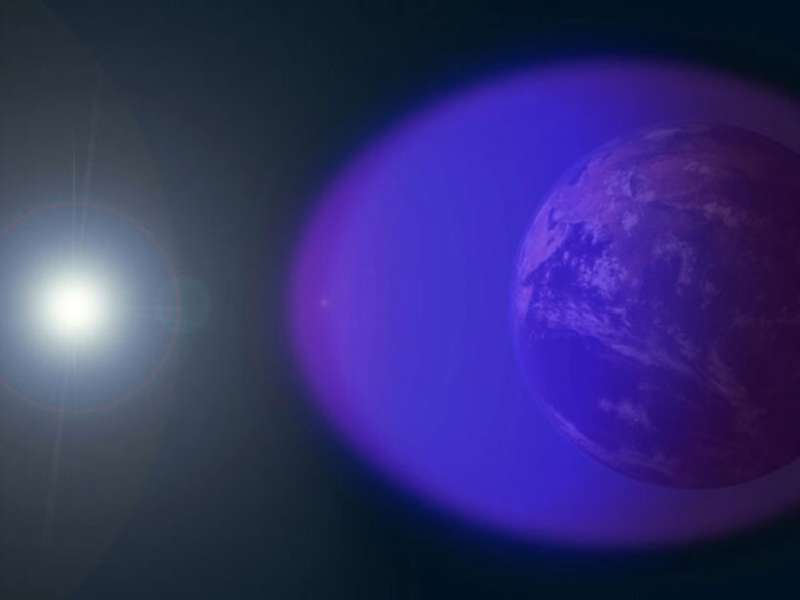A step toward making GPS more resilient to space weather

Societies around the world now depend on satellite-based navigation systems, such as GPS, for a multitude of applications, including transportation, agriculture, military munitions, emergency services, and social networking, among others. However, natural hazards such as space weather can disrupt signals from these Global Navigation Satellite Systems (GNSS).
To better understand such disruptions, Sun et al. have developed a mathematical model that accurately emulates interruptions of GNSS signals caused by one particular space weather phenomenon: irregular low-density patches in the charged ion plasma that makes up Earth's ionosphere.
These low-density plasma patches usually form above Earth's equator around twilight and are known as equatorial plasma bubbles. When GNSS signals encounter them, the signals undergo a type of modification known as ionospheric scintillation, which can fade their intensity to the point that they are no longer detected by a receiver—the signal may be lost.
Many GNSS satellites use signals at two different frequencies to counteract ionospheric scintillation-driven fading, with one frequency acting as a backup. However, a signal could still be lost if both frequencies are disrupted.
To capture the effects of ionospheric scintillation and explore the benefit of dual-frequency GNSS signals, the researchers developed the new model using a mathematical approach known as a Markov chain. They estimated parameters for the model from data on actual signal disruptions caused by ionospheric scintillation above Hong Kong on 2 March 2014.
To test the model, the researchers compared its predictions with real-world data and found that it accurately emulated the timing and duration of the actual signal disruptions and did so more accurately than an earlier model that did not use a Markov chain approach. Model simulations also suggest that dual-frequency GNSS signals can, indeed, significantly counteract the disruptive effects of strong scintillation, specifically in the context of aircraft navigation.
In the future, this new modeling approach could be extended to improve understanding of other effects of ionospheric scintillation on GNSS signals, as well as their effects at other latitudes. A better understanding of these disruptions could ultimately inform efforts to make GNSS satellites more resilient to scintillation and other forms of space weather.
More information: Andrew K. Sun et al, Markov Chain‐Based Stochastic Modeling of Deep Signal Fading: Availability Assessment of Dual‐Frequency GNSS‐Based Aviation Under Ionospheric Scintillation, Space Weather (2021). DOI: 10.1029/2020SW002655
Provided by American Geophysical Union
This story is republished courtesy of Eos, hosted by the American Geophysical Union. Read the original story here.





















